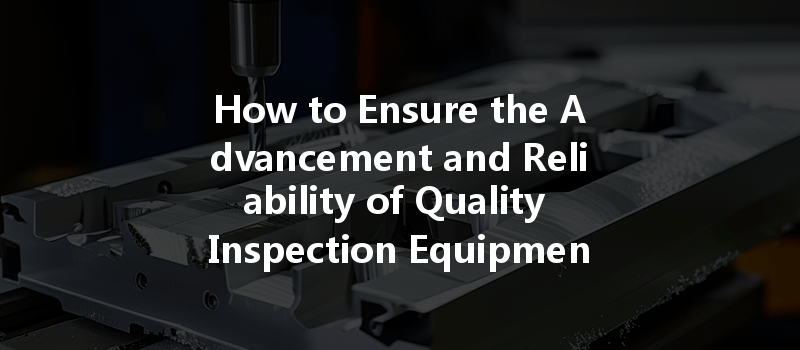Did you know that nearly 20% of defective parts produced in CNC machining can be attributed to inadequate quality inspection processes? In today’s fast-paced manufacturing environment, where precision and efficiency are paramount, the quality of inspection equipment used in CNC machining becomes a critical factor in ensuring that products meet the demanding standards of quality and reliability. This blog explores the advances in quality inspection equipment and strategies to ensure their reliability for optimal production.
Why Quality Inspection Equipment Matters
Quality inspection equipment is vital for detecting defects before they escalate into production problems. An effective inspection process allows manufacturers to maintain high standards, reduce waste, and ultimately enhance customer satisfaction. In the world of CNC machining, where minute measurements can lead to significant impacts on end products, understanding how to optimize inspection equipment is fundamental.
Current Challenges in Quality Inspection
While advancements in technology have led to sophisticated quality inspection tools, manufacturers often face numerous challenges:
Advancement in Quality Inspection Equipment for CNC Machining
Non-contact inspection technologies, such as laser measurement and optical inspection systems, offer manufacturers the ability to gather data without physically touching the part, reducing the risk of damage.
Key Advantages:
A Case Study in Non-Contact Inspection
A leading aerospace manufacturer adopted a laser triangulation system to improve its quality inspection process. By integrating non-contact measurement tools, the company was able to halve the inspection time while improving accuracy by 30%.
Automation plays a vital role in modern quality inspection. Automated systems can handle repetitive tasks efficiently while reducing the likelihood of human error.
Key Advantages:
Implementing Automation for Quality Assurance
Consider a CNC machining shop that implemented an automated vision system for its quality checks. With cameras mounted throughout the production line, the system provided continuous feedback, catching defects as they occurred and reducing scrap rates by 40%.
AI and machine learning technologies are beginning to revolutionize quality inspection by enhancing the ability to predict and identify defects.
Key Advantages:
The Future of AI in Quality Inspection
A machine shop that integrates AI-based inspection found that their defect rate dropped significantly. Their AI system could analyze results, identify issues faster than human inspectors, and suggest corrective measures that optimized the entire production process.
New types of sensors are emerging, allowing manufacturers to gather data more holistically during the inspection process.
Key Advantages:

Implementing Sensor Technologies
A machining center adopted advanced sensors on its CNC machines to monitor wear and tear, leading to a 25% reduction in unplanned downtime. These sensors provided data that informed timely maintenance scheduling, prolonging equipment life.
Digital twins—virtual replicas of physical systems—offer profound insights into quality inspection processes.
Key Advantages:
Real-world Application of Digital Twins
A manufacturing firm utilized digital twin technology to monitor its production lines. By simulating the entire production process digitally, they identified bottlenecks operationally and improved their inspection protocols, resulting in a 30% increase in overall efficiency.
Strategies to Ensure Reliability
Ensuring the reliability of quality inspection equipment is crucial for sustained operational excellence. Here are detailed steps manufacturers can adopt:
Consistent calibration of inspection tools is essential for accurate results. Manufacturers should implement a regular maintenance schedule that includes:
Employing skilled personnel is vital for utilizing advanced inspection technologies. Companies should develop comprehensive training programs that cover:
Implementing data management systems to analyze inspection data can help identify trends and areas for improvement:
Building relationships with inspection equipment suppliers can yield benefits:
Before fully integrating new inspection technologies, manufacturers should consider pilot programs:
In the ever-evolving landscape of CNC machining, ensuring the advancement and reliability of quality inspection equipment is more critical than ever. By leveraging non-contact technologies, automation, AI, and sophisticated sensor systems, manufacturers can enhance their inspection processes significantly. The strategic implementation of these solutions, complemented by ongoing training, reliable data management, and collaborative suppliers, creates a robust framework for achieving optimal production outcomes.
Investing in quality inspection not only minimizes defects and waste but also positions businesses competitively in a dynamic marketplace. Remember, the foundation of successful CNC machining lies in its quality inspection, making it essential for manufacturers to reconsider their approach to quality assurance continuously. As we move into the future, a commitment to advancing quality inspection equipment will pave the way for innovation and reliability in CNC machining processes.






